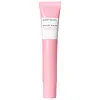What's inside
What's inside
 Key Ingredients
Key Ingredients

 Benefits
Benefits

 Concerns
Concerns

 Ingredients Side-by-side
Ingredients Side-by-side

Hydrogenated Polyisobutene
EmollientEthylene/Propylene/Styrene Copolymer
Butylene/Ethylene/Styrene Copolymer
Oryza Sativa Bran Wax
Skin ConditioningCeramide NP
Skin ConditioningCeramide AP
Skin ConditioningCeramide EOP
Skin ConditioningPalmitoyl Tripeptide-38
Skin ConditioningSodium Hyaluronate
HumectantHydrolyzed Sodium Hyaluronate
Skin ConditioningTocopheryl Acetate
AntioxidantErgothioneine
AntioxidantGlycerin
HumectantPhytosphingosine
Skin ConditioningCholesterol
EmollientPortulaca Pilosa Extract
Skin ConditioningSucrose Cocoate
EmulsifyingPanthenol
Skin ConditioningSodium Lauroyl Lactylate
EmulsifyingCarbomer
Emulsion StabilisingXanthan Gum
EmulsifyingCetearyl Ethylhexanoate
EmollientSorbitan Isostearate
EmulsifyingMentha Arvensis Leaf Oil
MaskingMentha Piperita Flower/Leaf/Stem Oil
Skin ConditioningWater
Skin ConditioningHydrogenated Polyisobutene, Ethylene/Propylene/Styrene Copolymer, Butylene/Ethylene/Styrene Copolymer, Oryza Sativa Bran Wax, Ceramide NP, Ceramide AP, Ceramide EOP, Palmitoyl Tripeptide-38, Sodium Hyaluronate, Hydrolyzed Sodium Hyaluronate, Tocopheryl Acetate, Ergothioneine, Glycerin, Phytosphingosine, Cholesterol, Portulaca Pilosa Extract, Sucrose Cocoate, Panthenol, Sodium Lauroyl Lactylate, Carbomer, Xanthan Gum, Cetearyl Ethylhexanoate, Sorbitan Isostearate, Mentha Arvensis Leaf Oil, Mentha Piperita Flower/Leaf/Stem Oil, Water
Polybutene
Hydrogenated Polyisobutene
EmollientBis-Behenyl/Isostearyl/Phytosteryl Dimer Dilinoleyl Dimer Dilinoleate
EmollientDiisostearyl Malate
EmollientCaprylic/Capric Triglyceride
MaskingSynthetic Wax
AbrasiveHydrogenated Styrene/Isoprene Copolymer
Sucrose Tetrastearate Triacetate
EmollientTrihydroxystearin
Skin ConditioningEuphorbia Cerifera Wax
Tribehenin
EmollientSodium Hyaluronate
HumectantGlycerin
HumectantCitrullus Lanatus Fruit Extract
Skin ConditioningTerminalia Ferdinandiana Fruit Extract
AntioxidantRubus Idaeus Leaf Extract
Skin ConditioningPrunus Salicina Fruit Extract
AntioxidantDextrin Palmitate
EmulsifyingPolyglyceryl-2 Diisostearate
EmulsifyingPolyglyceryl-2 Triisostearate
EmulsifyingEthylhexyl Palmitate
EmollientDehydroacetic Acid
PreservativeHydrogenated Styrene/Butadiene Copolymer
Sorbitan Sesquioleate
EmulsifyingWater
Skin ConditioningPentaerythrityl Tetra-Di-T-Butyl Hydroxyhydrocinnamate
AntioxidantStevia Rebaudiana Extract
Parfum
MaskingCI 77891
Cosmetic ColorantCI 15985
Cosmetic ColorantCI 15850
Cosmetic ColorantCI 77499
Cosmetic ColorantPolybutene, Hydrogenated Polyisobutene, Bis-Behenyl/Isostearyl/Phytosteryl Dimer Dilinoleyl Dimer Dilinoleate, Diisostearyl Malate, Caprylic/Capric Triglyceride, Synthetic Wax, Hydrogenated Styrene/Isoprene Copolymer, Sucrose Tetrastearate Triacetate, Trihydroxystearin, Euphorbia Cerifera Wax, Tribehenin, Sodium Hyaluronate, Glycerin, Citrullus Lanatus Fruit Extract, Terminalia Ferdinandiana Fruit Extract, Rubus Idaeus Leaf Extract, Prunus Salicina Fruit Extract, Dextrin Palmitate, Polyglyceryl-2 Diisostearate, Polyglyceryl-2 Triisostearate, Ethylhexyl Palmitate, Dehydroacetic Acid, Hydrogenated Styrene/Butadiene Copolymer, Sorbitan Sesquioleate, Water, Pentaerythrityl Tetra-Di-T-Butyl Hydroxyhydrocinnamate, Stevia Rebaudiana Extract, Parfum, CI 77891, CI 15985, CI 15850, CI 77499
 Reviews
Reviews

Ingredients Explained
These ingredients are found in both products.
Ingredients higher up in an ingredient list are typically present in a larger amount.
Glycerin is already naturally found in your skin. It helps moisturize and protect your skin.
A study from 2016 found glycerin to be more effective as a humectant than AHAs and hyaluronic acid.
As a humectant, it helps the skin stay hydrated by pulling moisture to your skin. The low molecular weight of glycerin allows it to pull moisture into the deeper layers of your skin.
Hydrated skin improves your skin barrier; Your skin barrier helps protect against irritants and bacteria.
Glycerin has also been found to have antimicrobial and antiviral properties. Due to these properties, glycerin is often used in wound and burn treatments.
In cosmetics, glycerin is usually derived from plants such as soybean or palm. However, it can also be sourced from animals, such as tallow or animal fat.
This ingredient is organic, colorless, odorless, and non-toxic.
Glycerin is the name for this ingredient in American English. British English uses Glycerol/Glycerine.
Learn more about GlycerinHydrogenated Polyisobutene is a synthetic polymer. Polymers are compounds with high molecular weight. Hydrogenated Polyisobutene is an emollient and texture enhancer.
In one study, Hydrogenated Polyisobutene showed better skin hydration levels than Caprylic/Capric Triglyceride. As an emollient, it helps keep your skin soft and hydrated by trapping moisture in.
Hydrogenated Polyisobutene is often used as a mineral oil replacement.
Learn more about Hydrogenated PolyisobuteneSodium Hyaluronate is hyaluronic acid's salt form. It is commonly derived from the sodium salt of hyaluronic acid.
Like hyaluronic acid, it is great at holding water and acts as a humectant. This makes it a great skin hydrating ingredient.
Sodium Hyaluronate is naturally occurring in our bodies and is mostly found in eye fluid and joints.
These are some other common types of Hyaluronic Acid:
Learn more about Sodium HyaluronateWater. It's the most common cosmetic ingredient of all. You'll usually see it at the top of ingredient lists, meaning that it makes up the largest part of the product.
So why is it so popular? Water most often acts as a solvent - this means that it helps dissolve other ingredients into the formulation.
You'll also recognize water as that liquid we all need to stay alive. If you see this, drink a glass of water. Stay hydrated!
Learn more about Water